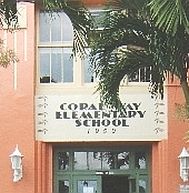Can Public Hackspaces Save Main Street?
With the rules changed forever the new boom towns might be the ones that invest in the talent and ingenuity of their own people.

Most indicators show that the worst ravages of the great recession are behind us. Unemployment has been trending downward from its 2009 high to the current 7% and the S&P 500 has been breaking market records throughout 2013. Even with all the positive signs of economic recovery something doesn’t feel right.
Last September, University of Texas at Austin, and University of California at Berkley, released a joint study that indicates a disturbing trend. Since the 1990s the U.S. has seen more economic downturns than the previous 30 years, and each one has been accompanied by longer periods of pervasive unemployment.
We need to face the reality that underemployment and declining American mobility are the new normal. According to the National Employment Law Project mid-wage jobs represented 60% of the jobs lost since the start of the recession, but only account for 27% of jobs gained during the recovery. It’s likely that most of those traditional middle class jobs are gone forever, leaving highly skilled workers competing for low-wage positions.
Not surprisingly, while white collar employment faded from possibility for a generation of highly educated 30 and unders, “maker” culture exploded. The introduction of crowdfunding platforms, consumer 3D printers, ubiquitous online storefronts, and especially the rise in urban hackspaces all happened during recent history’s most devastating economy. Without the safety net of traditional life-long employment, educated young entrepreneurs are igniting the next era of American innovation.
Even the U.S. Department of Defense recognizes the value in tapping this enormous brainstrust. DARPA set out to prove a point by offering a $1 million reward to anyone who could design a viable next-generation swimming tank for the Marine Corps. Last April, they awarded the prize to a team of 3 private sector independent engineers from 3 different states, and in the process they proved that having nearly 20 million citizens with degrees in a scientific field is a vastly under-appreciated resource.
With so many makers realizing the value of their own ideas the number of hackspaces in the U.S. has skyrocketed. Most are run by small groups, often non-profit. By pooling resources, members are able to offset the costs of an individual machine shop and raw prototyping materials. Hackspaces, by their co-op nature, build a strong symbiotic community where makers can share their unique skills and break off into project groups. College students, professional engineers, hobbyists, and retirees may all offer something different, but equally important.
The value of bringing these like-minded, but siloed, individuals together isn’t lost on some forward-thinking cities. In 2011 the Allen County Public Library in Fort Wayne, Ind. partnered with non-profit group Tekventure to open the doors on a 50 foot trailer in their parking lot. This trailer contained a 3D printer, some machining tools, and a very high concept. They became famous as the first municipal hackspace. Around the same time the Fayetteville Free Library in Upstate New York secured a grant for $10,000 to open their “Fab Lab”. In February of 2013 the trend had become so successful that American Libraries Magazine (The official publication of the American Library Association) ran an extensive piece on how their readers could build and operate a hackspace. These pioneering public facilities see the value in connecting and empowering their community around innovation. A new invention can add millions of dollars to the infrastructure of its local area. Fort Wayne is a city that was hit hard by the loss of a major manufacturing plant in the 1980s. Over the past 30 years it’s rebounded by working to diversify its local economy; No wonder the idea of a public hackspace appealed to them.
Even with a fully developed prototype and business plan capital is difficult to come by. Most local small business grants are centered around improving brick and mortar structures, not funding start-ups. Levi Simons of LA Makerspace believes crowdfunding can be crucial for small projects who would have a difficult time finding traditional backers.
“The money may not come in much faster than it would have ten or twenty years ago, but the sheer number of people a crowdfunding campaign can reach means that a new maker can more quickly find collaborators and people who can help bring their idea into being. This will certainly level the playing field at first for people to bring their ideas into various markets, niche or mass, but this same leveling will most likely lay the groundwork for the next crop of big industries. Sure, anyone with a 3-D printer can quickly prototype an idea and share it online, but that same low-friction market gives quick growth to the first movers in a market. As a result you get a few big names, such as Makerbot and Thingiverse, and a long skinny tale of bit players. This is the same deal as each wave of technology leveling the first playing field to make way for the new giants of the next.”
A successful crowdfunding campaign can elevate a hacker project from just a concept to a major player. Look at SmartThings, a company which brought in $1.2 million on Kickstarter for a device that internet enables household items like door locks and light switches. They closed a venture funding round of $3 million in December of 2012 and now employ over 40 in the D.C. area. ElevationLab, another Kickstarter project to make high quality charging docks generating over $1 million in pre-orders. They now offer 3 different products in their line (not including their laser customization business), all from their plant in Portland, Oregon.
Across most of the ailing American landscape either of these stories would be a game changer. In the past a rust belt city could revitalize itself by attracting a mega corporation to open a plant or distribution center. Recent years have shown only small victories in drawing major manufacturing back to middle America. With the rules changed forever the new boom towns might be the ones that invest in the talent and ingenuity of their own people. For local governments, supporting publicly accessible hackspaces, developing matching fund programs for new technology businesses, and partnering with educational non-profits might be the only way to stay competitive. ![]()




